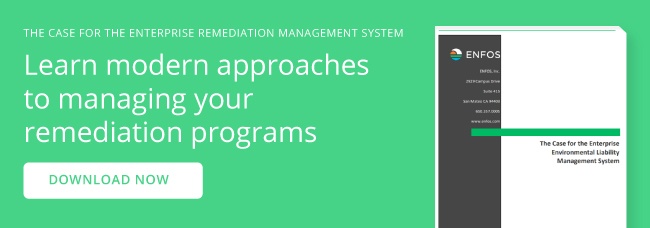What you’ll learn in this article:
- A lay of the land on the current state of environmental remediation management
- What areas of the job are currently the most painful for remediation management professionals
- What a structured, unified data paradigm can bring to the field
Directing and managing an environmental portfolio is no singular task.
Success in remediation management means juggling a wide array of tasks, sub-tasks, goalposts (that sometimes move), change orders, consultant teams, vendor contracts, Purchase-to-Pay systems, historical/current lab data, and more - all while keeping the portfolio on the right side of regulatory lines AND within projected budgets.
After speaking with hundreds of remediation directors and project managers over nearly two decades, it’s clear that some facets of the job are more painful than others. While the same can be said for “general domain” project management - environmental remediation has its own unique challenges that can make for some sizable variance in pain points. At ENFOS, we’ve gotten close to many remediation teams over the years, conducting evaluations to help them determine the areas that need the most attention.
In a 25-question survey of remediation directors and project managers, we noticed a similar story across respondents.
Over 85% of respondents rated having to use different disparate systems, spreadsheets or databases to manage their portfolio as “Painful” or “Severely Painful”.
When remediation project data is scattered, achieving peak performance is nearly impossible. With data spread over many systems, you always have the looming spectre of version control issues haunting your documents. Most importantly, a scattered data story is no story at all. Without seeing your data on a common platform, you’re unable to perceive the trends and patterns that emerge and lend guidance to your decisions.
This disparity is clearly common among remediation professionals - in large part due to the fact that general ERP solutions aren’t equipped to handle the unique requirements of a remediation portfolio.
More than 30% of relevant respondents rated their lack of ability to analyze their data to learn from trend-spotting and past performance as “Most Severe Pain”.
With 81% of respondents rating this as “Painful” or worse, it’s clear that those tasked with wrangling the many data streams of a remediation portfolio are feeling every bit of the tech-laggard state of the industry. It’s understandably frustrating if other departments in your company are equipped with modern cloud software solutions while your team is still stuck grinding it out on spreadsheets or ad-hoc Frankenstein systems.
Nearly 9 out of 10 remediation professionals considered producing reports and analysis for upper management (or other business functions such as Finance/Accounting) as Painful or worse.
This is no great surprise when you consider the often-challenging process of creating a report from disparate data sources. Version control issues can rear their head here, as can instances of missing data. Not to mention that the quality of analysis usually depends on the quality of your data. However, with data streams in order, this is an area that modern business intelligence tooling can greatly reduce the pain of.
When it comes to reconciling actual expenditures with reserve balances on a project and program basis, only 12.9% of surveyed remediation directors and managers considered this pain-free.
Accurately forecasting reserve budgets can be one of the most difficult parts of the job to nail down. 87.1% of the directors and project managers surveyed considered reconciling their reserve budget with actual spending as “Painful” or higher. The question is: How do you make it easier?
The techniques that we’ve seen effectively increase forecasting ability almost wholly center around data analysis. This doesn’t necessarily mean introducing an algorithm to your excel sheets - it involves first collecting and storing data in a structured, unified way. When all of your project and portfolio knowledge lives on a common platform designed specifically for remediation management, you open yourself up to an entirely new level of forecasting ability.
ENFOS is a project management software designed ONLY for environmental remediation. Companies that use ENFOS have seen big performance boost to their program, with an ROI greater than 800%.
Check out more on our Solutions page or download our featured whitepaper:





